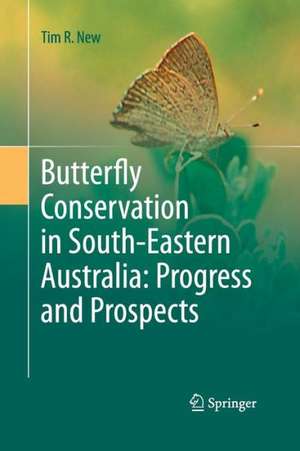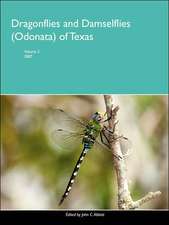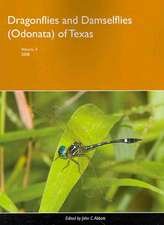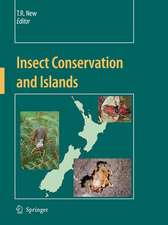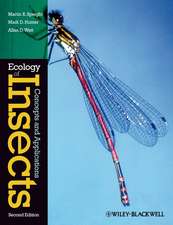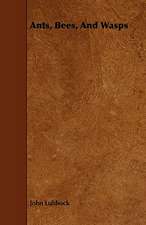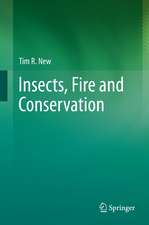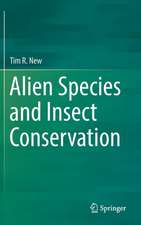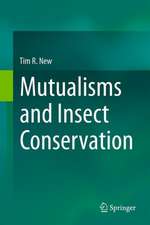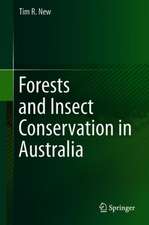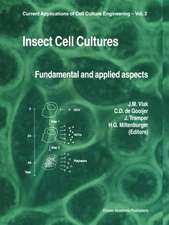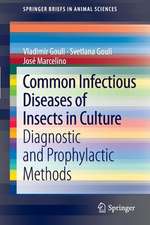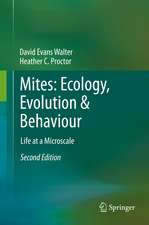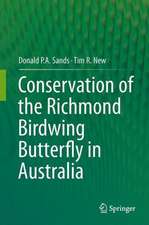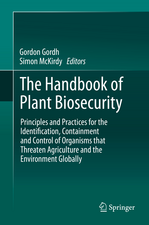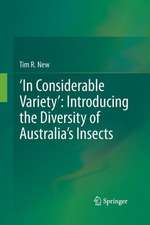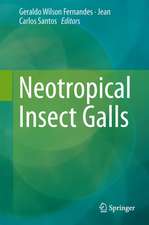Butterfly Conservation in South-Eastern Australia: Progress and Prospects
Autor Tim R. Newen Limba Engleză Paperback – 15 oct 2014
| Toate formatele și edițiile | Preț | Express |
|---|---|---|
| Paperback (1) | 940.09 lei 43-57 zile | |
| SPRINGER NETHERLANDS – 15 oct 2014 | 940.09 lei 43-57 zile | |
| Hardback (1) | 944.19 lei 43-57 zile | |
| SPRINGER NETHERLANDS – 19 oct 2010 | 944.19 lei 43-57 zile |
Preț: 940.09 lei
Preț vechi: 1146.44 lei
-18% Nou
Puncte Express: 1410
Preț estimativ în valută:
179.91€ • 187.13$ • 148.53£
179.91€ • 187.13$ • 148.53£
Carte tipărită la comandă
Livrare economică 14-28 aprilie
Preluare comenzi: 021 569.72.76
Specificații
ISBN-13: 9789400790049
ISBN-10: 940079004X
Pagini: 200
Ilustrații: X, 190 p.
Dimensiuni: 155 x 235 x 11 mm
Greutate: 0.29 kg
Ediția:2011
Editura: SPRINGER NETHERLANDS
Colecția Springer
Locul publicării:Dordrecht, Netherlands
ISBN-10: 940079004X
Pagini: 200
Ilustrații: X, 190 p.
Dimensiuni: 155 x 235 x 11 mm
Greutate: 0.29 kg
Ediția:2011
Editura: SPRINGER NETHERLANDS
Colecția Springer
Locul publicării:Dordrecht, Netherlands
Public țintă
ResearchCuprins
Preface.- Acknowledgements.- Part 1. Setting the scene: south-eastern Australia’s butterflies and their conservation.- Chapter 1 Australia’s butterflies: some background.- 1.1 Introduction.- 1.2 Diversity.- 1.3 Biogeography.- 1.4 Collecting and recording.- 1.5 Distribution and conservation status.- Chapter 2 Environments for butterflies in south eastern Australia.- 2.1 Introduction.- 2.2 Environmental change.- 2.3 Threats and butterfly declines.- 2.4 Urbanisation.- Chapter 3 Butterflies in Australian conservation legislation.- 3.1 Introduction: History, development and reception.- 3.2 The Butterfly Action Plan.- 3.3 Consequences of recognition for conservation need.- Part 2. Cases: subspecies to communities.- Chapter 4 A wetland skipper on sedges: Hesperilla flavescens.- 4.1 Introduction.- 4.2 Hesperilla flavescens flavia.- 4.3 Hesperilla flavescens flavescens.- Chapter 5. The Australian hairstreak, Pseudalmenus chlorinda.- 5.1 Introduction.- 5.2 Biology and conservation.- 5.3 Discussion.- Chapter 6 Tales of two coppers, Paralucia spp..- 6.1 Introduction.- 6.2 The Eltham copper, Paralucia pyrodiscus lucida.- 6.2.1 Biology.- 6.2.2 Conservation.- 6.2.2.1 Larval counts.- 6.2.2.2 Adult counts.- 6.2.2.3 Threats.- 6.3 The Bathurst copper, Paralucia spinifera.- 6.3.1 Biology.- 6.3.2 Conservation.- 6.4 Discussion.- Chapter 7. Unity in richness: Azure blues (Ogyris spp.) in patchy environments.- 7.1 Introduction.- 7.2 Biology and conservation.- Chapter 8. Butterflies in a disappearing ecosystem: alpine Satyrinae.- 8.1 Introduction.- 8.2 Alpine butterflies.- 8.2.1 Oreixenica ptunarrra.- 8.2.2 Oreixenica latialis theddora.- Chapter 9 ‘Butterfly community No 1’.- 9.1 Introduction.- 9.2 Mount Piper.- 9.3 Communities in legislation and practice.- Part 3. Lessons learned, and future endeavour.- Chapter 10.- 10.1 Introduction.- 10.2 Taxonomic uncertainty.- 10.3 Needs for conservation.- 10.4 Fire as a management tool.- 10.5 Conservation and landscape issues.- 10.6 Climatechange.- 10.7 Expanding ranges.- 10.8 Effective butterfly conservation.- 10.9 Towards management.- 10.10 The future.- 10.11 Lessons from and for elsewhere.- 10.12 Broader regional context.- References.- Index.
Recenzii
From the reviews:
“Essential reading for anyone undertaking conservation science. The insights and advice are built on a lifetime of theoretical and practical experience by one of the world’s leading professional arthropod conservationists, well known for his publications … . In reading this book, you are left in no doubt that you are being taught by a master of the immensely difficult practice of conservation, in degrees of difficulty an arena well beyond the comparatively simple task of carrying out field research for publishing papers.” (Roger L. H. Dennis, Journal of Insect Conservation, Vol. 15, 2011)
“Essential reading for anyone undertaking conservation science. The insights and advice are built on a lifetime of theoretical and practical experience by one of the world’s leading professional arthropod conservationists, well known for his publications … . In reading this book, you are left in no doubt that you are being taught by a master of the immensely difficult practice of conservation, in degrees of difficulty an arena well beyond the comparatively simple task of carrying out field research for publishing papers.” (Roger L. H. Dennis, Journal of Insect Conservation, Vol. 15, 2011)
Textul de pe ultima copertă
This survey of the development of butterfly conservation in an important, largely endemic and highly threatened regional fauna of Australia demonstrates how lessons from elsewhere have been applied and developed in a relatively poorly known fauna, in which conservation targets range from single subspecies to entire biotopes and communities. Principles and practical programmes are discussed, and much hitherto scattered information is brought together in a synthesis that will be of considerable interest to ecologists, conservation biologists, and butterfly conservation practitioners in other parts of the world.
Caracteristici
Brings Australian butterfly conservation efforts firmly to an international perspective First major synthesis /summary for the region, with many recent references Discussions of case histories demonstrate variety of approaches needed and feasible Includes supplementary material: sn.pub/extras
